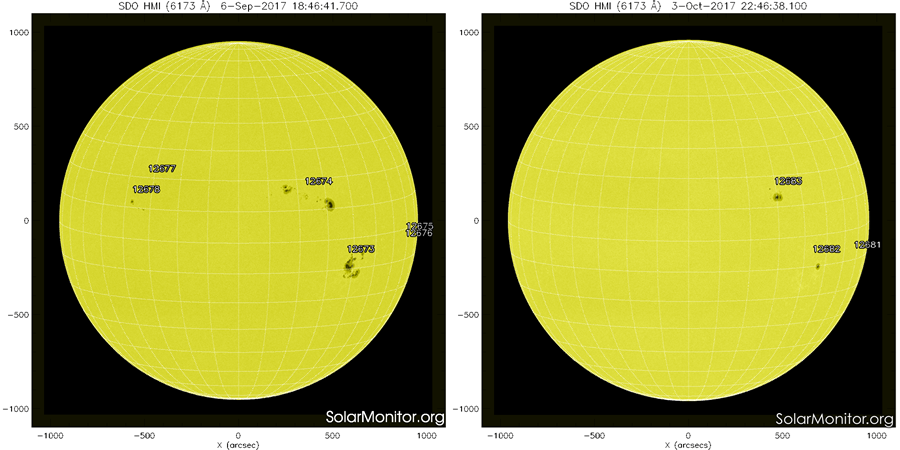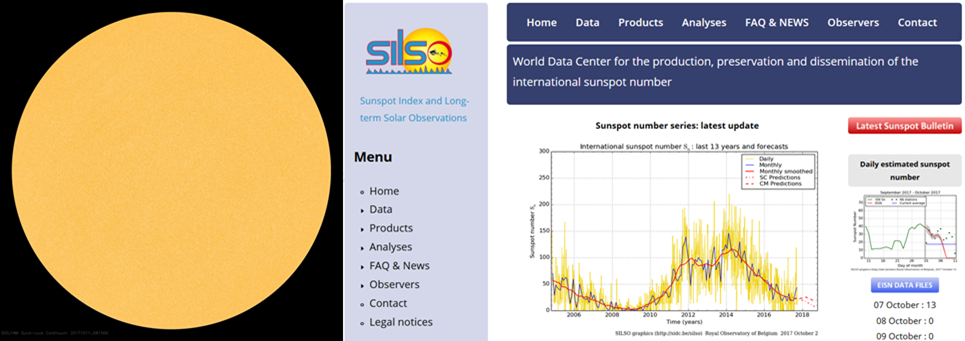Last week, only one C-class flare was observed (on 5 October), with flaring activity mostly restricted to low-level B-class events. The two main sunspot groups, NOAA 2682 and NOAA 2683, both had relatively simple magnetic configurations and so were not able to produce more intense flaring. Nonetheless, some of the eruptive events were very nice in EUV imagery (Extreme Ultraviolet), such as the one starting on 6 October around 08:00UT. The clip underneath shows a nice cusp (flamelike structure, indicative of reconnection) in SDO/AIA 094 (hot parts of the solar corona) on the right, with post-eruption coronal loops at lower temperatures of about 700.000 degrees in the left part of the clip (SDO/AIA 171).

NOAA 2682 and NOAA 2683 were the remnants of respectively NOAA 2673 and 2674, those two big sunspot regions responsible for intense solar activity just one month ago (a solar rotation). NOAA 2673 was the source of the two most powerful flares so far this solar cycle (see the STCE news items here and here). SDO/HMI imagery underneath shows the difference in outlook of the solar disk between last week (right) and last month (left).

As could be expected with NOAA 2682 and NOAA 2683 rounding the west limb, the Sun has turned spotless since 8 October. These were the first spotless days in more than 2 months. Temporary increases ("hick-ups") in sunspot and solar activity are fairly common during the declining phase of the solar cycle. The evolution of the daily sunspot number and of the number of spotless days can be followed on the SILSO webpage at resp. the "EISN page" and the "Spotless Days page". There's still a long way to go to the next solar cycle minimum.






